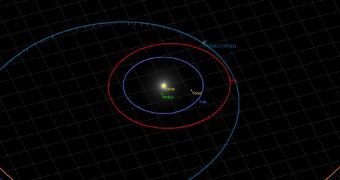Astronomers with the Teide Observatory Tenerife Asteroid Survey team at the European Space Agency's (ESA) Optical Ground Station in Tenerife, Spain, announce the discovery of a previously-unknown comet in our solar system. The object, designated P/2014 C1, is now called TOTAS.
The comet is currently located deep within the solar system, far away from the Sun. Not much is known about its origins and physical properties, since it was only identified on February 1. Experts were conducting a series of routine verifications when they came across the fast-moving object.
The Teide Observatory is a 1-meter (3.3-foot) telescope, so discovering such a small object so far away required a bit of luck. The Minor Planet Center, which is operated by the International Astronomical Union (IAU), confirmed its discovery 3 days later. Eight other telescopes around the world verified that the comet was actually there before the IAU released its report.
“All comets are interesting especially as they are thought to have played a role in bringing water to Earth in the distant past. Later this year, Rosetta will meet up with another comet, 67P/Churyumov–Gerasimenko, and study its nucleus and surrounding gas and dust, so it’s especially fitting that a European team has found a new comet this year,” says ESA expert Detlef Koschny.

 14 DAY TRIAL //
14 DAY TRIAL //